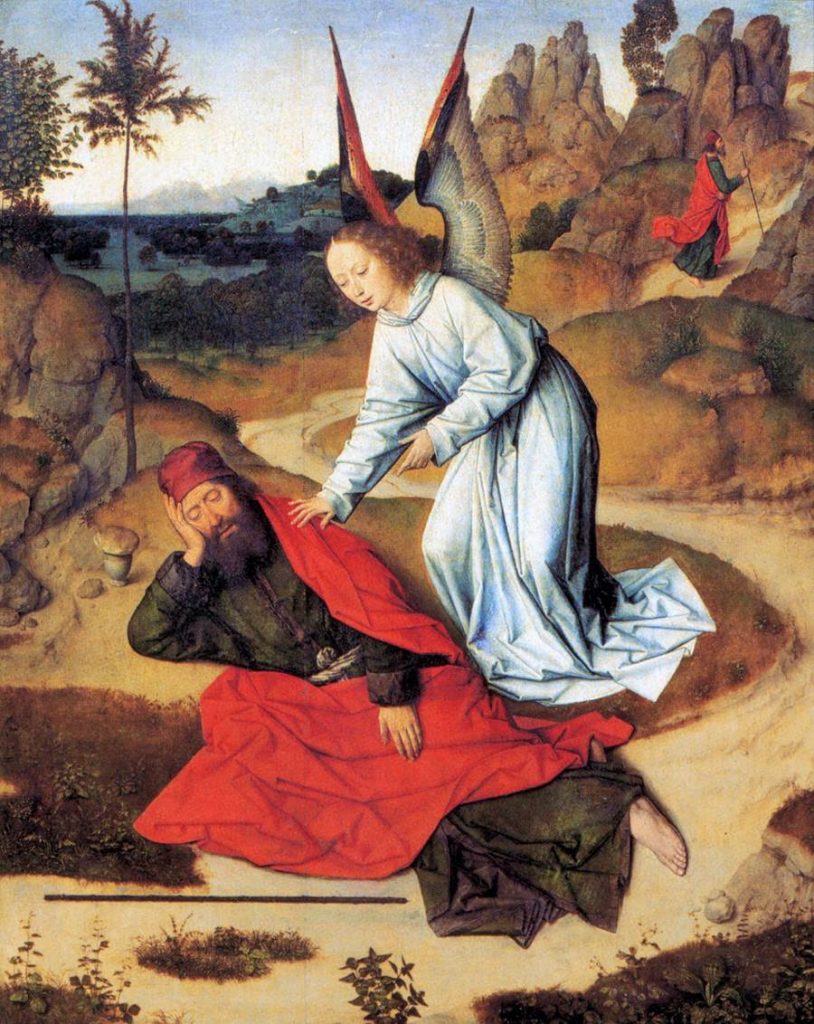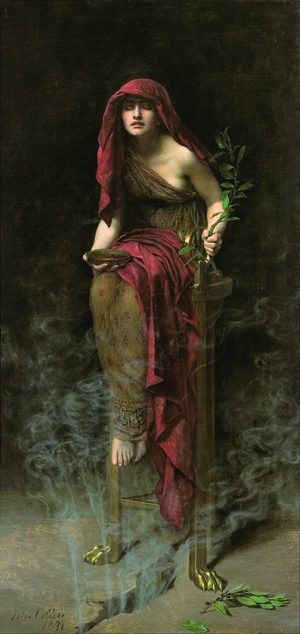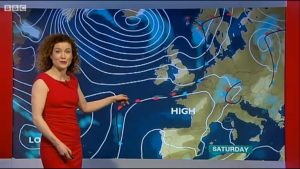The Prophet
Prophecy is a classical form in Hebrew religions. Prophets have a vision of the future based on their intimate relationship with God. They are distinguished from other humans by a singular constituency. Spinoza remarks that rather than a specific knowledge, they have a powerful imagination. As their striking images speak to the public, they have often been called demagogues. They communicate with their public not directly but through the mediation of signs, because they aim at reforming human actions rather than transforming the natural world.
Weber makes a distinction between prophets of fortune and misfortune. This distinction is not only, as Spinoza assumed, a difference between happy and sad individuals, but the result of a collective process of rationalization from one to the other. The first prophets were at the service of kings and would announce the results of war, exalting with their enraged ecstasy the rest of the army. But as Hebrew society became demilitarized, prophets would work for private individuals, giving magical divination, and announcing the collapse of society without being heard. The prophet of misfortune, such as Elias or Jonas, is a lonely figure who can be seen as pathological, but whose visions retrospectively turn out to be true. Prophets are more generally critical figures, facing the king with dreams that mysteriously indicate a discrepancy between the law and the world. Combining affects and language, Hebrew prophecy is a discourse encoded in signs that demands to be deciphered.
The Oracle
In classical antiquity, divination took on two distinct forms: that which is inspired by gods (mantiké, which comes from mania, madness) and that which follows technical rules (oionostiké). While Plato saw the second as a form of superstition, Cicero and the Stoïcs, for different reasons, rehabilitated it as a primitive knowledge of nature.
The Romans put the interpretation of natural phenomena at the heart of their techniques of divination. The observation of the flight of birds (auspices), played a significant role in legends of foundation, and was re-enacted for important political decisions—no important decision was taken without consulting the auguri. Today, the founding of a public monument is still an “in-auguration.” Natural disasters such as epidemics, earthquakes or monstrous births were read by the haruspices as prodigies: signs sent by the gods. Oracles, specialists in the interpretation of signs, were consulted for their omen, or ‘true speech’—a truth that would not refer to a present state but to an emerging future
Divination techniques were the object of philosophical debates raising a tension between science and freedom: is it possible to conceive a natural causality that would include all future events? Would it not contest the principle of contradiction according to which one thing cannot be another at the same time? While Cicero maintained a place for hazard and human freedom, the Stoïcs conceived a world of sympathies or “contagions,” in which the relations between beings were revealed by natural events. This conception of the “reason of the world” paved the way for modern medicine.
The Herald
In medieval Europe, heralds are charged with carrying messages to and from the commanders of opposing armies. They are specialists in genealogy: they can trace, on the occasion of tournaments, the history of a family by looking at its arms. This knowledge is called heraldic: the capacity to derive from a visual sign the family blood to which it refers.
Historian Michel Pastoureau has shown that heralds express relations between colors and between animals that are meaningful in medieval societies. The herald is a figure of feudal power: in an unstable society, where alliances are constantly reversed, they traced a minimal order, constituted by feudal relations of descent. At the end of the Middle Ages, they were more and more attached to a noble family, for whom they work as ambassadors. But since they were most often wandering as minstrels, they played a crucial role as arbiters in contested battles for power. In charge of teaching heraldry to sons of kings and knights, they were sometimes also used as alarm clocks.
The herald must therefore be distinguished from the harbinger in the millenarian beliefs of the Middle Ages. While the harbinger announces doom as a divine punishment by the dark mediation of monstrous creatures, the herald makes a clear distinction between friends and foes in an unstable order.
The Prognosticator
The prognosticator is an early modern figure who gathers detailed knowledge of the present in order to reveal how the future is likely to unfold. According to Koselleck, modern secular temporality broke free of the apocalyptic future of Christianity in two movements. First, with the emergence of state-based “rational prognosis” in the late seventeenth century, political strategists wrested control of visions of the future from the Church, distinguishing the temporality of human history from that of nature, and thus bringing the future into the domain of political rationality. For rational prognosis, the future was the product of calculated decisions made in the present, based on a limited number of possibilities: the past contained the elements of what was to come. If this form of future-orientation was thus a “static movement,” the next stage—the emergence of a philosophy of progress—opened up an image of the future that transcended the hitherto predictable. The future of this stage was characterized by the increasing speed of its approach and by its unknown quality. An exemplary figure here was the “prophetic philosopher” of the late eighteenth century, whose task was to lead the present toward a future utopia. As Lessing put it, the prophetic philosopher “cannot wait for the future. He wants this future to come more quickly, and he himself wants to accelerate it. ”
The Indicator
With the advent of statistics as a technique of government, the indicator constitutes a new mode of relating to the future. As the etymology suggests, the indicator points to a thing without explaining it (in contrast with the measure that seizes a reality). Policies using indicators of economic growth, public health or social inequality do not allow acting on the thing itself but on its trends or movements. An indicator selcets from a wide range of information to endorse political action. Governing by indicators means acting on actions without assuming a pre-given order. This form of governing can be characterized as neo-liberal, since it tries to govern at the margins, by using future trends to anticipate actions and yet preserve spontaneity. According to Ted Porter, one of the first occurrences of “indicator” is the description in 1839 of a bird that “indicates to honey hunters where the nests of wild-bees are.” Biodiversity is today a conception of nature as an ecosystem in which species are dependent one upon the other. For a bioindicator species, the determining criterion is the number of individuals; for a sentinel organism, what counts is the variation in many parameters at the organic, tissue, cellular or molecular level of each individual. Bioindicators provide a broad overview of the ecological quality of an ecosystem based on the structure and variety of its populations. Sentinel organisms provide more specific data on the noxiousness of pollutants. From qualitative indices of biodiversity or thermodynamics, indicators become quantitative at the end of the 19th century when they point to public health, crime or business. They allow forecasting of a nation’s health or the growth based on the observation of some of its elements, such as insanity, height or stock auctions. Indicators are linked to the birth of statistics because the availability of numbers reveals new regularities. But instead of speculating on collective entities, indicators point to a possible action on society – unless, by multiplying indicators, social policy paralyzes action itself.


